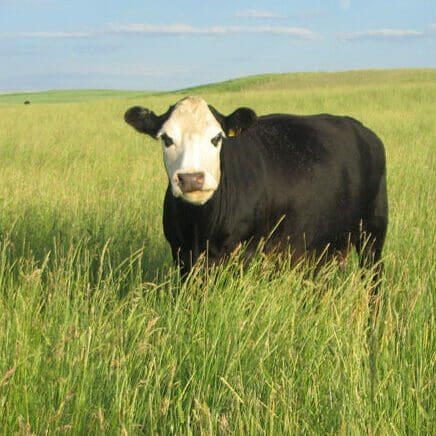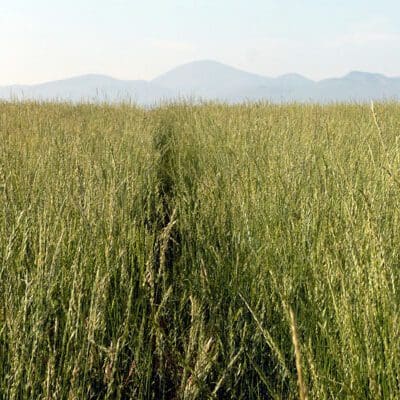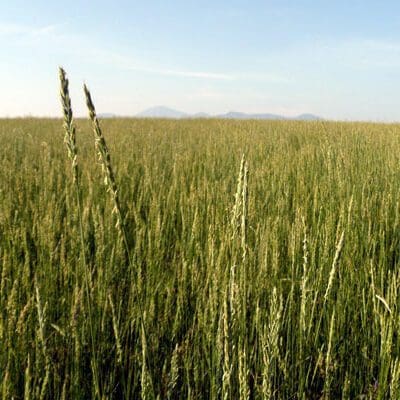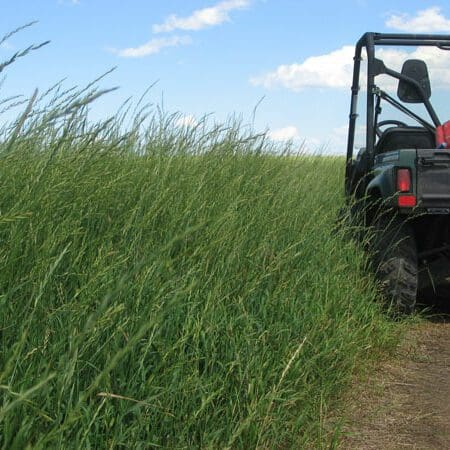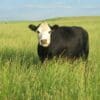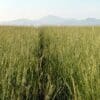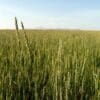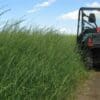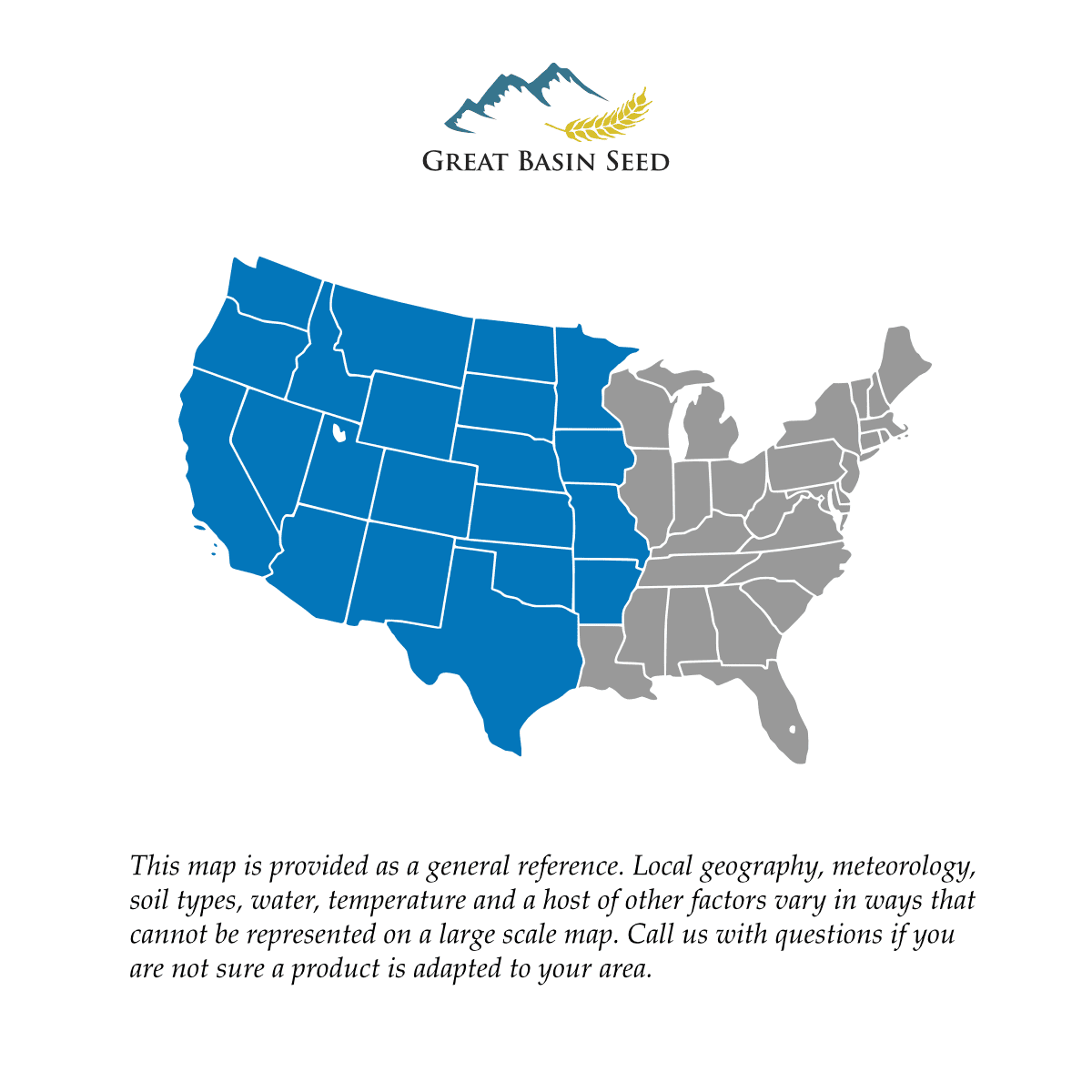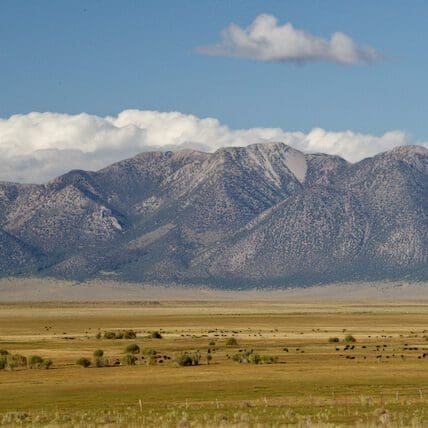Min. to Max. Annual Precipitation
40in.
Average Max. Height
A hybrid selected for persistence in alkaline and salt soils. Very palatable, unlike other grass species adapted to alkaline and salt soils. An advanced-generation hybrid between quackgrass (Elymus repens) and bluebunch wheatgrass (Pseudoroegneria spicata). It has fair to good forage quality for cattle, sheep and horses. Contains the drought tolerance and high palatability of the native bluebunch wheatgrass combined with the grazing tolerance of quackgrass. It is well-adapted to harsh habitats and saline environments.
AC Saltlander Green Wheatgrass (Elymus hoffmannnii var. AC Saltlander)is a hybrid selected for persistence in alkaline and salt soils. It is an excellent choice as a salt tolerant pasture grass. AC Saltlander is very palatable, unlike other grass species adapted to alkaline and salt soils. A recent practice in wheatgrass breeding has been the development of interspecific hybrids in the quest for “hybrid vigor”. Quackgrass was one of the major parental species in this effort, in particular for hybridization with bluebunch wheatgrass and crested wheatgrass. AC Saltlander Green Wheatgrass (Elymus hoffmannnii var. ac saltlander) is a result of those efforts and it is an excellent choice for saline soil plantings. AC Saltlander Green wheatgrass (Elymus hoffmannnii var. ac saltlander) is an advanced-generation hybrid between quackgrass (Elymus repens) and bluebunch wheatgrass (Pseudoroegneria spicata). It has fair to good forage quality for cattle, sheep and horses.
In 1989 the Agricultural Research Service and the Utah Agricultural Experiment Station released the cultivar NewHy Wheatgrass (Agropyron spicatum x repens= Pseudoroegneria spicata x Elytrigia repens). NewHy has largely disappeared from production and AC Saltlander is a new improved cultivar.
AC Saltlander contains the drought tolerance and high palatability of the native bluebunch wheatgrass combined with the grazing tolerance of quackgrass. It is well-adapted to harsh habitats and saline environments. AC Saltlander shines where other alkali and salt tolerant species fall short. Tall Wheatgrass, for example, is commonly planted in high salt areas and it grows well but is rank and not palatable. AC Satlander performs as well or better than Tall Wheatgrass with the added benefit of being highly palatable.
AC Saltlander Green Wheatgrass attributes:
- Especially suited for erosion control and reclamation on slight to moderate saline soils.
- Demonstrates exceptional salinity tolerance, better than intermediate, matches’ tall wheatgrass and exceeds Newhy RS Wheatgrass. Its extensive root system allows it to be useful in dewatering saline seep discharge areas.
- Selected for overall salinity tolerance, winter hardiness, and desirable plant form.
- Is a long lived perennial grass that is adapted to semiarid rangeland.
- Likes to receive 13″ of precipitation annually. It has similar drought tolerance as intermediate wheatgrass.
- Increased grazing tolerance and persistency on range sites and pasture.
- If properly managed it produces comparable quality yield of forage as brome and orchard grass in non-saline conditions.
- Is palatable; it has a low growth point which allows for flexible grazing and hay management.
- Resists moderate grazing pressure after establishment and recovers rapidly after grazing of defoliation.
- Produces aggressively spreading rhizomes which allow the stand to fill in. Under favorable conditions can displace foxtail barley.
- Is a cool season grass; its leaves remain greener and more succulent during the late summer, unlike other wheat grasses.
Excellent stands have been obtained on dry land range sites when seed is planted late enough in the fall to ensure it does not germinate until the spring. (Especially in saline sites). But spring seeding allows for more opportunity to eliminate competing weeks and is the recommended method.
Seedlings are vigorous and establish themselves rapidly under relatively harsh conditions.
It is important to prepare a firm seed bed. Seeds must be planted deep enough to ensure adequate moisture, but never planted deeper than 3/4″. Seedling at excessive depths will almost always result in partial to complete stand failure.
Minimal fertilizer should be applied during early seedling development. From 40 to 60 lbs. per acre of available nitrogen is recommended on mature plantings during the fall when tillers are developing or in the early spring.
Hybrid wheatgrass is especially suited for erosion control and reclamation on slight to moderate saline soils.
Recommended seeding rate: 10-20 lbs per acre. Adjust seeding rate to desired stand density.
Portions of the information above provided by Miller Seeds, Alberta Canada
Helpful Links
Additional information about this product can be found on the academic websites linked below.
Synonyms
Many plants have more than one common and scientific name. We've listed a few of them below.
- AC Saltlander Green Wheatgrass
- Elymus hoffmannii
Quick Plant Facts
| Common Name: | Ac Saltlander |
|---|---|
| Scientific Name: | |
| Lifespan: | |
| Origin: | |
| Plant Type: | |
| pH Tolerance: | |
| Seeds per Pound: | |
| Growth Height: | |
| Root Form: | |
| Planting Rate: | |
| Min. Precipitation: | |
| Best Time to Sow: | |
| Max Sowing Depth: | |
| Growth Season: | |
| Sun & Shade Tolerance: | Part Sun, Part Shade Tolerant |
| Hardiness Zones: |
